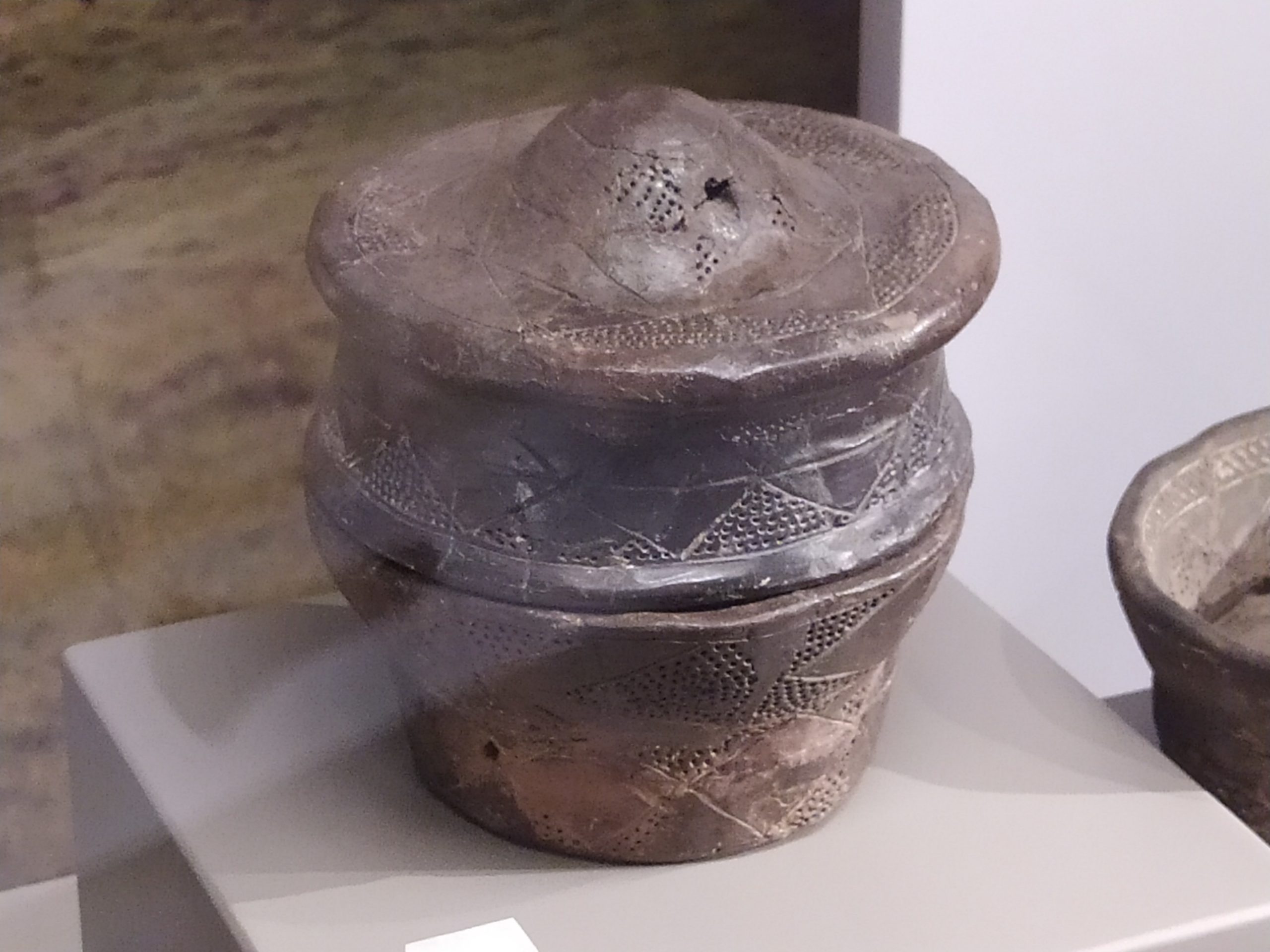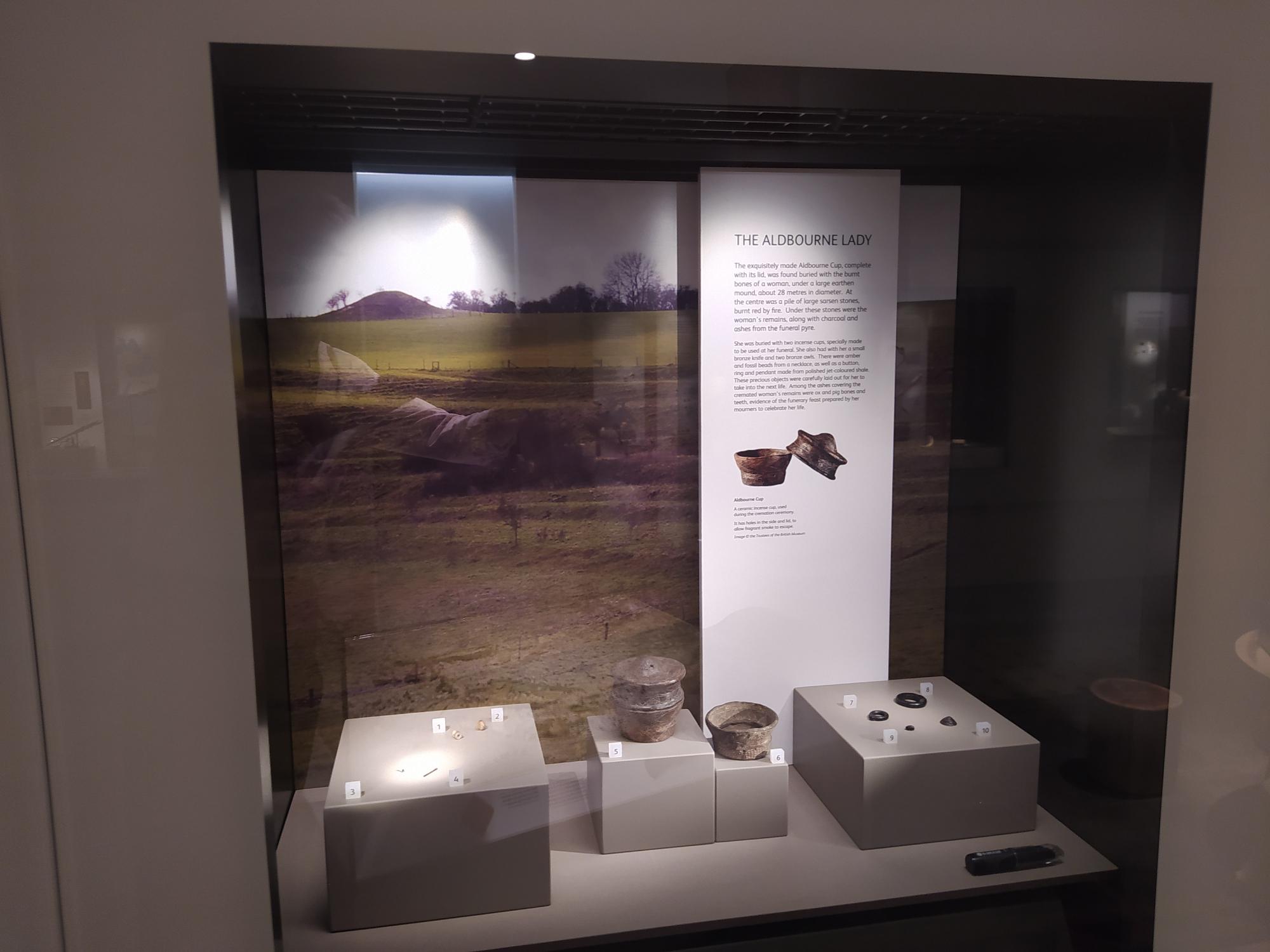The Aldbourne Cup
The exquisitely made Aldbourne Cup, complete with its lid, is beautifully decorated inside and out with V-shapes, diamonds and triangular patterns. This decoration was made using a sharp object, a bone pin or bronze awl, which was repeatedly pushed into the soft clay. Similar cups have been found in Wiltshire, but none with a lid, or as finely made was found buried with the burnt bones of a woman, under a large earthen mound, about 28 meters in diameter. At the centre was a pile of large sarsen stones, burnt red by fire. Under these stones were the woman’s remains, along with charcoal and ashes from the funeral pyre.
She was buried with two incense cups, specially made to be used at her funeral. She also had with her a small bronze knife and two bronze awls. There were amber and fossil beads from a necklace, as well as a button, ring and pendant made from polished jet-coloured shale. These precious objects were carefully laid out for her to take into the next life. Among the ashes covering the cremated woman’s remains were ox and pig bones and teeth, evidence of the funerary feast prepared by her mourners to celebrate her life.
The Aldbourne IV burial was excavated by Canon William Greenwell when he visited the parish in 1878-9. William Greenwell (1820-1918) was a Canon of Durham Cathedral, the Cathedral’s librarian and archivist, and a Fellow of the Royal Society. Despite this distinguished career, he is best known as ‘a prolific excavator of barrows’. He excavated more than 300 Bronze Age burial mounds in total, mostly in the North of England. Greenwell sold most of his very large collection of objects, including his Aldbourne finds, to the British Museum in 1879



